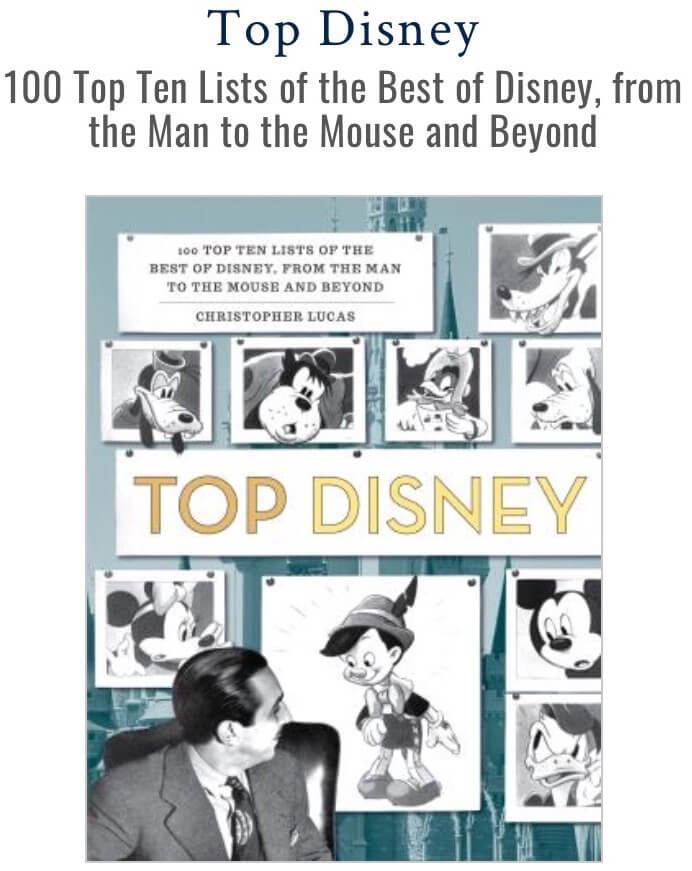The Top Ten Disney Patriotic Connections
Walt Disney once said in an interview, “If you could see in my eyes, the American flag is waving in both of them and my spine is growing this red, white and blue stripe.”
Walt’s strong patriotic spirit inspired him as a teenager in 1917 to join the fight in World War I. He was a year too young to enlist in the military, so he served in France with the Red Cross Ambulance Corps, just after the war ended. In the early 1940s President Franklin D. Roosevelt chose Walt to be the State Department’s goodwill ambassador to our neighbors in South and Central America. Walt felt this was his patriotic obligation (and he got a few good movies out of the trip, too.)
Walt was passionate about preserving and sharing stories of American history and folklore, as many of his popular movies and TV shows demonstrated. In 1964, for his tireless promotion of the values and ideals of American culture, Walt was awarded the Presidential Medal of Freedom, the highest civilian honor granted in the United States.
During his lifetime, and even after his death in 1966, The Walt Disney Company has highlighted many stories, scenes, characters and tableaus that have been a nod to the patriotic spirit of its founder. Here are ten of the most notable.
Disney Characters Join the War Effort (1941-1945)
After the attack on Pearl Harbor on December 7, 1941 – which marked the entry of the U.S. into World War II – the Disney Studio lot was commandeered by the military. The stated reason was that the location in Burbank was close to the Lockheed Aircraft manufacturing site, so in the interests of national defense the Army had to set up headquarters at Disney. Combined with the loss of many Disney employees to the service, it hampered production and profits.
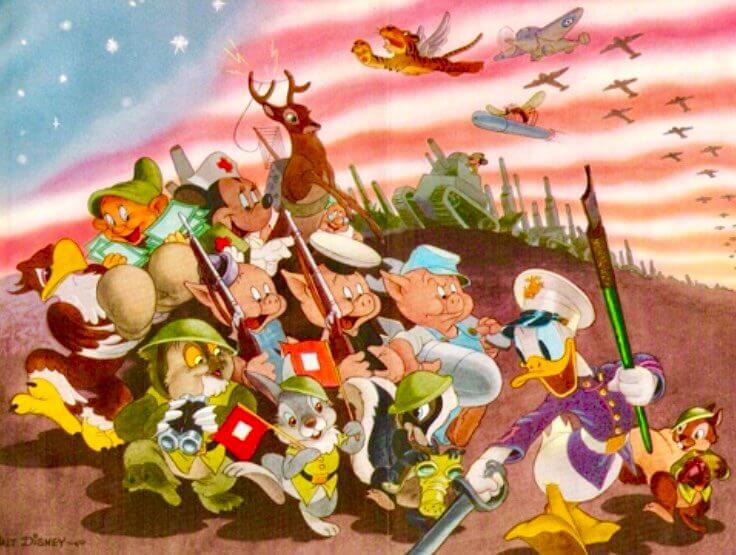 Nevertheless, Walt did what he could to aid the war effort. He allowed many of the Disney characters to be used free of charge by the military as mascots and decorations for planes. New characters and logos were also created by Disney for the armed services. In addition, Walt produced shorts to be seen by the G.I.’s as well as those on the home front, encouraging them to buy war bonds, make sacrifices, and to support the troops. Several shorts featured characters like Pluto and Donald adjusting to life in the Army or picturing how horrible life would be if the enemy won. Donald Duck was the studio’s biggest star at the time, so the Treasury Department was thrilled when he appeared in two cartoons promoting payment of taxes.
Nevertheless, Walt did what he could to aid the war effort. He allowed many of the Disney characters to be used free of charge by the military as mascots and decorations for planes. New characters and logos were also created by Disney for the armed services. In addition, Walt produced shorts to be seen by the G.I.’s as well as those on the home front, encouraging them to buy war bonds, make sacrifices, and to support the troops. Several shorts featured characters like Pluto and Donald adjusting to life in the Army or picturing how horrible life would be if the enemy won. Donald Duck was the studio’s biggest star at the time, so the Treasury Department was thrilled when he appeared in two cartoons promoting payment of taxes.
Perhaps Walt’s biggest contribution was the 1943 feature film “Victory Through Air Power” which advocated the use of long range bombers to win the war. It was not a box office success, but it did make an impression on the Allied commanders, which was the intention.
After the war ended in 1945, and Walt started climbing his way back into the pop culture conversation, these patriotic efforts became a footnote in Disney history, but they absolutely helped to lift the spirits of Americans during the struggles of the early 1940s. (For more on Disney during the War Years, you can read the excellent books written on the subject by historian David Lesjak.)
Johnny Tremain (1957)
In 1944, Esther Forbes published an award-winning book aimed at young readers called “Johnny Tremain.” Though set in the lead up to the Revolutionary War in Boston, the story was aimed squarely at driving home the importance of the struggle for liberty that formed the foundation of the United States of America. It reminded people why we were fighting so hard against tyranny in World War II.
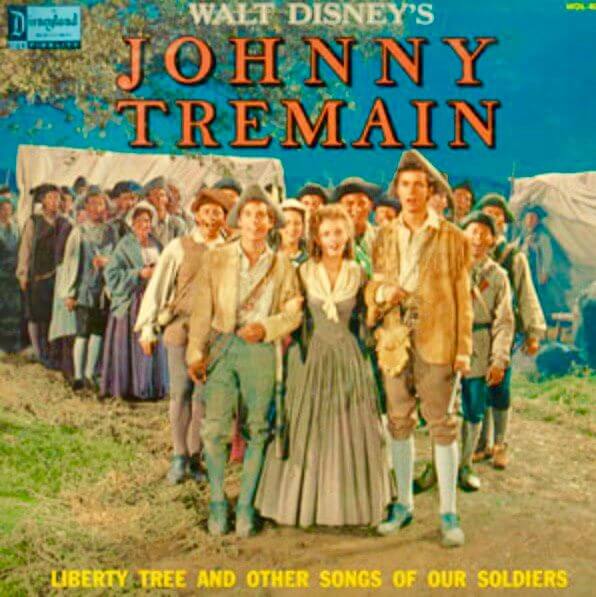 Walt optioned the book, and in 1957 released a feature film version in technicolor, starring Hal Stalmaster as Johnny, who interacted with American legends like Samuel Adams and Paul Revere. The movie contained a stirring Disney anthem called “The Sons of Liberty.” Walt selected a portion of Johnny Tremain to be included in the first half of a May, 1957 Disneyland TV show episode called “The Liberty Story.” It was paired with the cartoon short “Ben and Me,” about Ben Franklin and the beginning of the Revolutionary War in Philadelphia.
Walt optioned the book, and in 1957 released a feature film version in technicolor, starring Hal Stalmaster as Johnny, who interacted with American legends like Samuel Adams and Paul Revere. The movie contained a stirring Disney anthem called “The Sons of Liberty.” Walt selected a portion of Johnny Tremain to be included in the first half of a May, 1957 Disneyland TV show episode called “The Liberty Story.” It was paired with the cartoon short “Ben and Me,” about Ben Franklin and the beginning of the Revolutionary War in Philadelphia.
In Walt’s opening monologue for the program, he premiered plans for an addition to his Disneyland Park, inspired by the movie, called “Liberty Street.” Though the area was never built in California, it did evolve into Walt Disney World’s Liberty Square. Included in that square is The Liberty Tree, a 100 plus year old live oak tree with thirteen sturdy branches that was moved from six miles away on Disney’s Florida property to Liberty Square and has thirteen lanterns hanging from it, to represent America’s thirteen original colonies.
Pollyanna (1960)
Another literary favorite of Walt’s was 1913’s “Pollyanna” by Eleanor H. Porter. It was set in a small American town, like the one that Walt grew up in, and was the story of a young girl’s unquenchable optimism and the effect it has on everyone she meets.
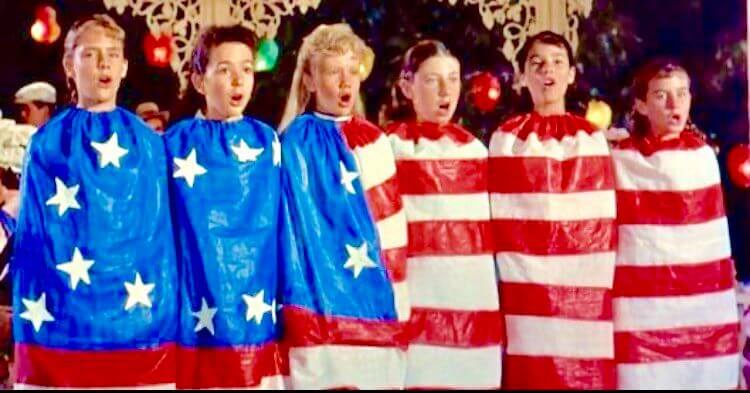 This was destined to be a Disney movie, and Walt got around to making it in 1960. He chose British youngster Hayley Mills to play Pollyanna, surrounding her with an all-star cast. The film was a love letter to life in Turn of the Century America, and the ideals and values that formed Walt’s days as a youngster in a small town.
This was destined to be a Disney movie, and Walt got around to making it in 1960. He chose British youngster Hayley Mills to play Pollyanna, surrounding her with an all-star cast. The film was a love letter to life in Turn of the Century America, and the ideals and values that formed Walt’s days as a youngster in a small town.
One of the final set pieces of the movie takes place at a celebration in the town square. Pollyanna and five of her friends get up in front of all the townsfolk to sing “America the Beautiful.” As if the song itself wasn’t patriotic enough, to hammer home the point Walt and director David Swift had the children wrapped completely in American flags while they sang.
America The Beautiful (1960)
Walt loved the song “America The Beautiful,” with its lyrics about spacious skies, amber waves of grain, and God’s grace and unity from sea to shining sea.
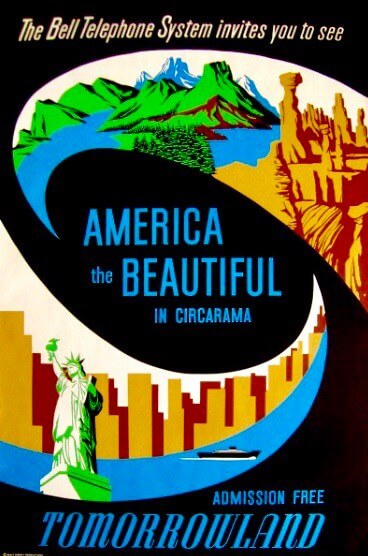 In addition to its inclusion in Pollyanna, Walt wanted to find the perfect way to capture its heartfelt descriptions of our country on film for Disneyland. Ub Iwerks, a gifted animator and the co-creator of Mickey Mouse, had the solution.
In addition to its inclusion in Pollyanna, Walt wanted to find the perfect way to capture its heartfelt descriptions of our country on film for Disneyland. Ub Iwerks, a gifted animator and the co-creator of Mickey Mouse, had the solution.
By 1960, Iwerks had moved on to the technical department of the studio. He invented a system called “Circarama” to shoot and show images in “Circle-Vision 360.” It used eleven projectors to show the 16MM film in the round. Bell Telephone paid for an attraction, called America The Beautiful, which opened in Tomorrowland in 1960 and ran until 1984. The Circle Vision cameras filmed images of the country from coast to coast, which played daily in the new theater.
A similar version of America the Beautiful premiered at Walt Disney World in 1971 and played until 1979. Circarama itself is still in use at Disney parks, in places like the Canadian and Chinese pavilions at Epcot. The score for America The Beautiful was released by Disneyland records and can still be heard in some areas of the parks today.
Patriotic Animatronics (1964-present)
One of the ideas for Liberty Street at Disneyland was a wax museum featuring every U.S. President up to that time. It never was built, but as Walt started to explore audio-animatronics in the 1960s, he decided to try to make a realistic human figure, and for his first major attempt he went to the top, creating a version of his hero, President Abraham Lincoln.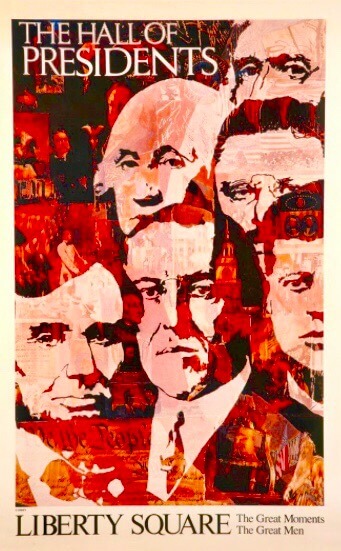
It wasn’t easy, but Walt and his Imagineers did the impossible, bringing the 16th President to life. It debuted at the 1964 New York World’s Fair to great acclaim. The stunning figure was moved to Disneyland after the NYC Fair closed, and Great Moments With Mr. Lincoln became a fan favorite. In 1971 Walt’s dream of honoring all the Presidents came true with The Hall of Presidents in Magic Kingdom’s Liberty Square. It wasn’t just Lincoln brought to life this time, each of the men on the stage moved realistically as their names were mentioned in the roll call.
In 1982, when Epcot Center’s The American Adventure opened, it was hosted by robotic versions of Mark Twain and Benjamin Franklin, and had audio animatronic appearances from American icons like Teddy Roosevelt, Susan B. Anthony and Will Rogers, each one delivering speeches that continue to inspire audiences from all over the world with messages about the patriotic spirit that drove the men and women included in the show to great heights and achievements.
The lobby of the American Adventure features an extremely popular live a cappella singing group called The Voices of Liberty, which draws crowds several times per day to hear them perform past and contemporary tunes from the American song book.
America Sings (1974)
After Walt died in 1966, work on new attractions slowed to a crawl. Most were clones of existing attractions, or finished products from ideas that Walt helped develop. For the very first Disney attraction that Walt had nothing to do with, the Imagineers went back to the nostalgia and patriotism well.
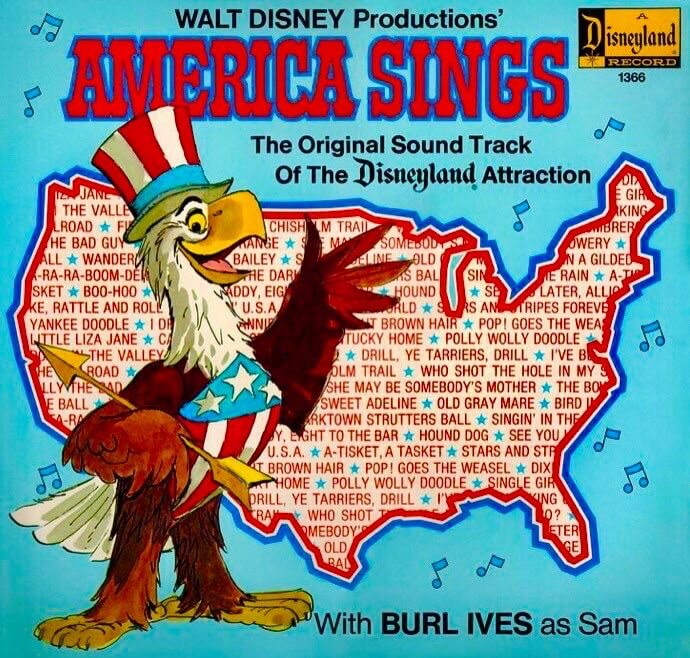
Since America’s Bicentennial was approaching in 1976, they developed a show called “America Sings” which would be a four-act trip through the history of the United States, told through song. The main reason it was four acts was that they were using the revolving theater from Walt’s Carousel of Progress, which had transferred to Disneyland from the 1964 World’s Fair, and was on its way to Walt Disney World.
America Sings was hosted by an Eagle named Sam, voiced by Disney Legend Burl Ives. It also had a cast of over 100 animatronic animals. The show was retired in 1988, since the Bicentennial theming had long since passed out of relevance and it was showing its age. The animatronic animals, however, were not retired. Many of them found their way into 1989’s Splash Mountain attraction at Disneyland, in particular on the steamboat scene at the ride’s finale.
America On Parade (1975)
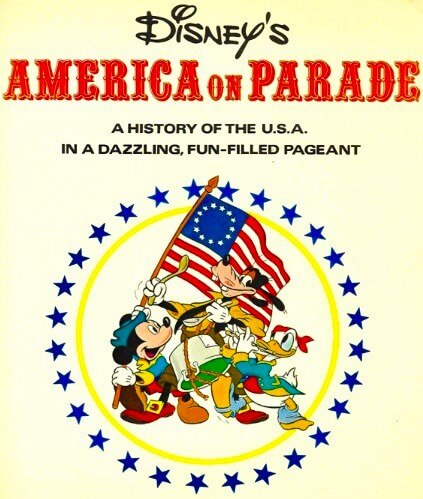 The whole country was going Bicentennial crazy by 1975. It seemed like every town from Hoboken to Honolulu was painting mailboxes, fireplugs and public buildings red, white and blue to get ready for America’s big 200th birthday party. Every major corporation also came up with tie-ins to cash in on the celebration. Disney was no exception.
The whole country was going Bicentennial crazy by 1975. It seemed like every town from Hoboken to Honolulu was painting mailboxes, fireplugs and public buildings red, white and blue to get ready for America’s big 200th birthday party. Every major corporation also came up with tie-ins to cash in on the celebration. Disney was no exception.
In 1975 Disney created a marketing campaign called “America on Parade” which featured Mickey, Goofy and Donald in Revolutionary War era attire. The trio was seen on everything from school lunch boxes to T-shirts, bumper stickers, and beyond.
In addition, Disney debuted an actual parade featuring most of the iconic Disney characters in a salute to America, with stars and stripes flying everywhere. It replaced the popular Main Street Electrical Parade for two years at Disneyland. When the Electrical Parade finally returned in 1977, it incorporated some of the patriotic features of the American one.
Presidential Inauguration Parade (1985)
On May 27, 1985, American history was made at Epcot Center. Disney CEO Michael Eisner offered to host the official Presidential Inauguration ceremonies and Parade – which had been canceled in Washington D.C. that January due to severe cold weather – at Walt Disney World. President Ronald Reagan – who was a close friend of Walt’s and co-hosted Disneyland’s 1955 opening – agreed. It would be the first time the official events were held outside of the nation’s capital.
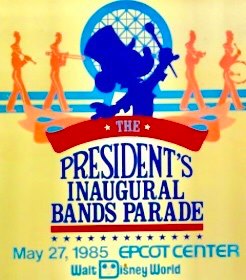 On Memorial Day 1985, the Secret Service took over Epcot Center for the day. An estimated 60,000 people showed up in and around Epcot. The President and First Lady came in by helicopter behind the American Experience. They were met by Mickey and Minnie – who were also making history. Mickey really hadn’t been seen in Epcot much since it opened in 1982 because Disney wanted to distance the park in the public’s eye from the Magic Kingdom and its characters, a situation that changed right after that. The bands marched, the President spoke live on national TV, his helicopter flew back out and everyone went home happy.
On Memorial Day 1985, the Secret Service took over Epcot Center for the day. An estimated 60,000 people showed up in and around Epcot. The President and First Lady came in by helicopter behind the American Experience. They were met by Mickey and Minnie – who were also making history. Mickey really hadn’t been seen in Epcot much since it opened in 1982 because Disney wanted to distance the park in the public’s eye from the Magic Kingdom and its characters, a situation that changed right after that. The bands marched, the President spoke live on national TV, his helicopter flew back out and everyone went home happy.
After that, Epcot – which had been struggling for admission sales – was a hit. It has changed a lot over the years, and will keep changing, but it will always have this historic American distinction.
Walt Disney World’s 4th of July Spectacular (1988)
America on Parade never truly went away at the Disney parks. Each year around July 4th, the parade itself would make a temporary comeback. In 1988, Disney broadcast the parade live on national television for the very first time, in an NBC special called “Walt Disney World’s 4th of July Spectacular.”
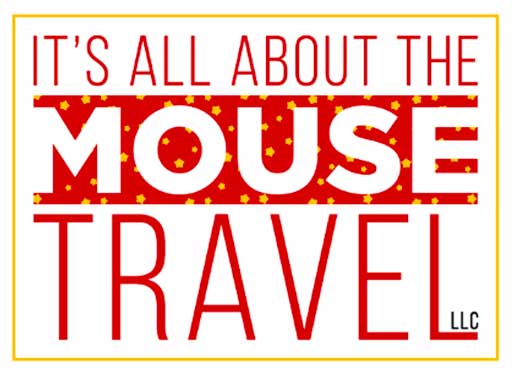 To fill in the air time between the bands and floats, the show featured hosts and guests like Mark Summers, Burt Reynolds, Carol Burnett, Bert Convy and Tommy Tune. Singer Lee Greenwood performed his hit “God Bless the USA” and the U.S. Navy’s Blue Angels performed aerial maneuvers overhead. The program was also a celebration of Mickey’s 60th birthday, pointing out often the strong connections between Walt, Mickey, and the patriotic ideals of America.
To fill in the air time between the bands and floats, the show featured hosts and guests like Mark Summers, Burt Reynolds, Carol Burnett, Bert Convy and Tommy Tune. Singer Lee Greenwood performed his hit “God Bless the USA” and the U.S. Navy’s Blue Angels performed aerial maneuvers overhead. The program was also a celebration of Mickey’s 60th birthday, pointing out often the strong connections between Walt, Mickey, and the patriotic ideals of America.
Never ones to waste a marketing opportunity, Disney aired commercials for and highlighted previews of the new Disney-MGM Studios Theme Park, set to open the following year at Walt Disney World.
A Salute to All Nations…But Mostly America (1991)
Speaking of the Disney-MGM studios, we round out our list with an attraction from that park, Muppet Vision 3-D.
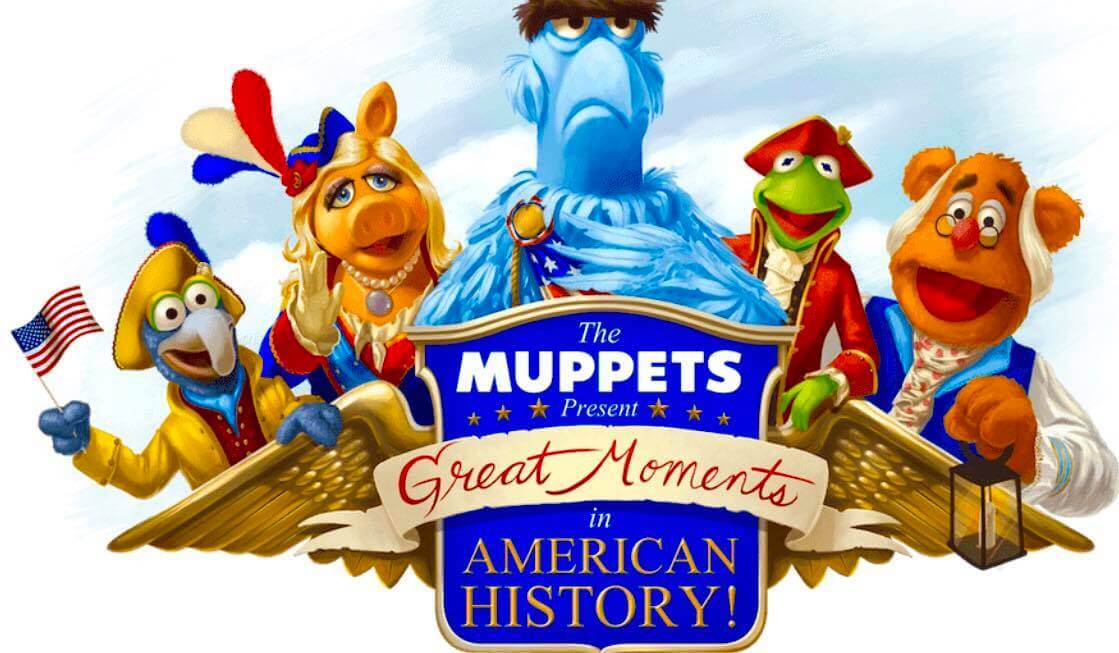 Like Walt Disney, Jim Henson – the creator of The Muppets – was a visionary and optimist who believed that what was wrong in America could always be fixed by what was right with America. Henson was in talks with Disney to develop a series of attractions featuring the Muppets. Unfortunately, he passed away in 1990 at the untimely age of 53. One of the last projects Henson worked on was the Muppet Vision film, a wacky Muppet-centric look at 3-D effects that takes place inside a replica of the Muppet Theater.
Like Walt Disney, Jim Henson – the creator of The Muppets – was a visionary and optimist who believed that what was wrong in America could always be fixed by what was right with America. Henson was in talks with Disney to develop a series of attractions featuring the Muppets. Unfortunately, he passed away in 1990 at the untimely age of 53. One of the last projects Henson worked on was the Muppet Vision film, a wacky Muppet-centric look at 3-D effects that takes place inside a replica of the Muppet Theater.
For the grand finale of the show within the show, Henson’s all too serious and super patriotic character Sam The Eagle (voiced by Frank Oz) mentions that he’s put together a lengthy show called “A Salute to All Nations…But Mostly America.” Kermit tells him he’s only got a few minutes, and things go spectacularly awry, with rockets red glare and bombs bursting in air, all as traditional American tunes play amongst the chaos.
In 2016 another tongue in cheek show starring Sam, called “Muppets Present Great Moments In American History” premiered in Liberty Square, from the windows above The Hall of Presidents. It stopped running daily in 2019, but is brought back occasionally during holiday seasons, especially ones with a patriotic theme, like President’s Day and July 4th. In Epcot, Sam The Eagle is now the host of a BBQ smokehouse patriotic themed restaurant at The American Adventure.
Of course, there are many other nods to American ideals and history throughout Disney’s films, shows and parks (In fact, Disney once even flirted with the idea of building a whole entire theme park exclusively devoted to American history, but that’s a story for another post) and there will be many more to come, but these ten embody some of the best Disney has to offer.
Happy 244th birthday, America! Wishing you many more.
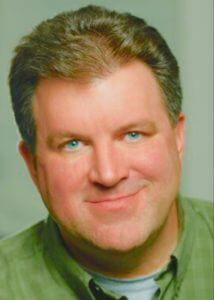
Christopher Lucas is an actor, author, motivational speaker and a lifelong fan of all things Disney.
He can be reached at MouseTopTen@Gmail.com
To order your copy of Top Disney, click here!
